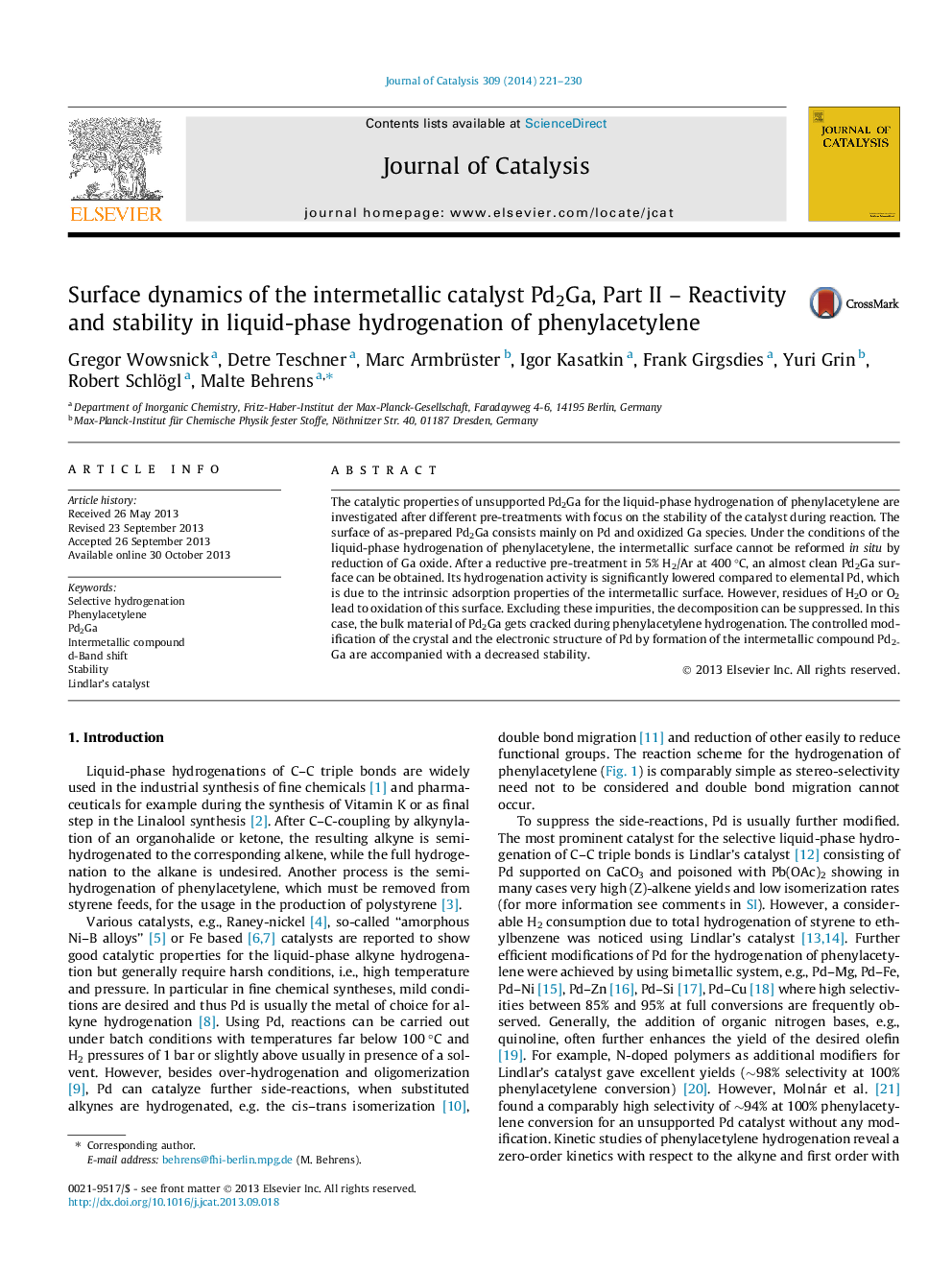| Article ID | Journal | Published Year | Pages | File Type |
|---|---|---|---|---|
| 61112 | Journal of Catalysis | 2014 | 10 Pages |
•Performance of Pd2Ga in hydrogenation of phenylacetylene was investigated.•Surface state, activity, and stability depend strongly on the pre-treatment.•Even at highly inert conditions, the surface is sensitive toward oxidation.•Reactivity is due to the decomposed and not due to the clean intermetallic surface.
The catalytic properties of unsupported Pd2Ga for the liquid-phase hydrogenation of phenylacetylene are investigated after different pre-treatments with focus on the stability of the catalyst during reaction. The surface of as-prepared Pd2Ga consists mainly on Pd and oxidized Ga species. Under the conditions of the liquid-phase hydrogenation of phenylacetylene, the intermetallic surface cannot be reformed in situ by reduction of Ga oxide. After a reductive pre-treatment in 5% H2/Ar at 400 °C, an almost clean Pd2Ga surface can be obtained. Its hydrogenation activity is significantly lowered compared to elemental Pd, which is due to the intrinsic adsorption properties of the intermetallic surface. However, residues of H2O or O2 lead to oxidation of this surface. Excluding these impurities, the decomposition can be suppressed. In this case, the bulk material of Pd2Ga gets cracked during phenylacetylene hydrogenation. The controlled modification of the crystal and the electronic structure of Pd by formation of the intermetallic compound Pd2Ga are accompanied with a decreased stability.
Graphical abstractFigure optionsDownload full-size imageDownload high-quality image (66 K)Download as PowerPoint slide
